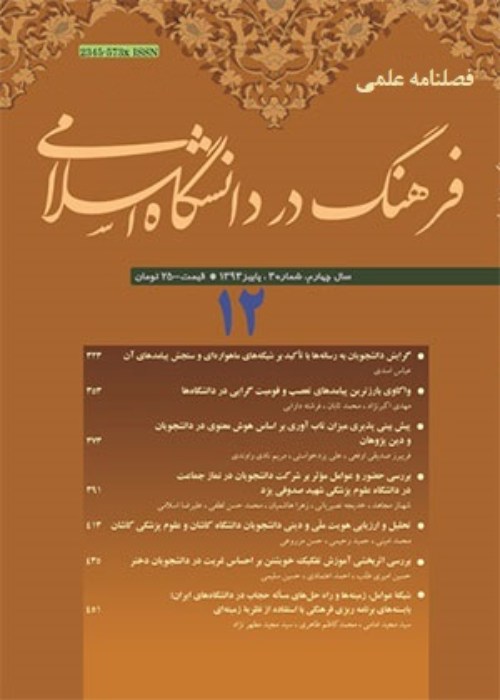Factors Related to Increasing and Decreasing Tendency of University Students to Religiosity: a Phenomenological Study
The aim of this study was to understand the factors related to increasing and decreasing tendebcy of University student s to religiosity.
This study was done by qualitative phenomenological method. The participants were 105 well-informed individuals in four four groups consisting of students (75 people), faculty members (nine people), cultural directors (nine people), and clerics (12 people) who were selected through criterion-referenced purposive sampling. Data were collected through semi-structured interviews and analyzed using Colaizzi's method.
Regarding the factors related to the tendency toward religiosity, data analysis led to the identification of 49 sub-themes and 29 themes. "Living and upbringing in religious families", "existence of religiosity role models in society and access to them", "religious honesty and sincerity in the activities of officials and individuals in society", "teaching methods of teachers of religious courses", "human's intrinsic and innate tendency toward religiosity", "achieving accurate religious accomplishments and their capacities in life", and "strengthening religious thinking and the quality of epistemological foundations" were the themes that at least three clusters of the sample group mentioned as factors related to students' tendency toward religiosity. Regarding the factors related to decreasing tendency toward religiosity, data analysis led to the identification of 87 sub-themes and 60 themes. "Misbehavior of so-called religious individuals", "misconduct in propagating and teaching religion", "factors related to teaching general courses", "students' cognitive and psychological characteristics", "social and economic factors", and "factors related to social networks and media" were the themes that at least three clusters of the sample group mentioned as factors related to students' decreasing tendency toward religiosity.
For the religious education of students, it is necessary to consider these factors in policymaking, and in order to promote the religiosity of students, it is recommended that the cultural institutions of the universities develop specific educational protocols based on the effective factors mentioned.
- حق عضویت دریافتی صرف حمایت از نشریات عضو و نگهداری، تکمیل و توسعه مگیران میشود.
- پرداخت حق اشتراک و دانلود مقالات اجازه بازنشر آن در سایر رسانههای چاپی و دیجیتال را به کاربر نمیدهد.



